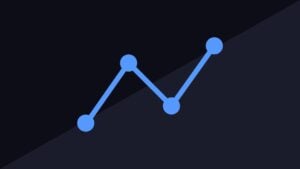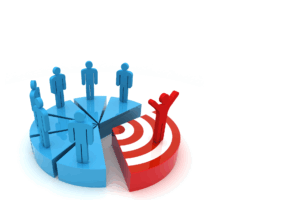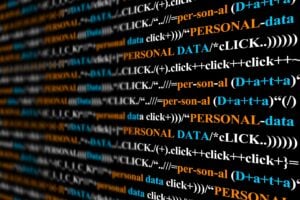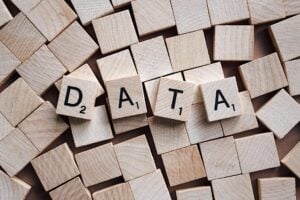Advancing the Next Era of Data Storytelling, Part 1
With The Next Era of Insights Report, one aspect we explored was data storytelling themes. How has it evolved? What remains crucial and what’s being left off the table? Transforming complex data into compelling, actionable narratives might be considered essential but we sought to uncover some of the nuances of this concept.
Brought to you by All Things Insights and TMRE, “The Next Era of Insights Report” features 16 market research leaders examining how they and their organizations are navigating this changing terrain, with a focus on: human-AI collaboration; strategic transformation; storytelling evolution; accelerating ROI and more.
Storytelling as Part of the Insights Ecosystem
Speaking of impact, Kerry Sette, Vice President, Head of Consumer Insights & Research, Voya Financial, sees an evolution of storytelling with the growth of AI and as insights groups build more of an ecosystem or knowledge hub.
“Our north star is really to drive data-driven decision making across the entire organization, ideally, proactively. But how do we tell those stories? The marrying of that behavioral data with perception data is absolutely a must-have. I feel like it’s always been there, but now we are developing an ecosystem of insights. You’re able to readily and more easily tell those stories,” says Sette.
She observes, “But where we are getting even better is really making sure that now we can actually put those stories together. We can publish them easily. We can leverage them in sales situations. We continue to get better about celebrating some of those successes. It’s really been like a crawl, walk, run, and we’re probably still on the walk stage here. But I think with AI, with personalized messaging at a whole new level with AI, we’re building content hubs and insights hubs that house not just operational data, but perception data, behavioral data, which really helps the ability to tell these stories.”
Sette adds, “But having that AI overlay on top of it, even just if I think about an insights hub—that’s life changing for my team. Having that deeper holistic view of the customer to tell those stories is even more important. I think we’re going to get there. AI is really just going to add gasoline to the fire and accelerate it all.”
Taking a Closer Look at the Data
For Arvind Balasundaram, Executive Director, Commercial Insights & Analytics, Regeneron Pharmaceuticals, it is worthwhile to take a closer look at how data fundamentals frame the current narrative.
He says, “The story was always the most important part in our business. But there are at least three remarkable differences right now. One is the data itself is different. Now we are really treating unstructured data, where a lot of market research inputs reside in a more technologically savvy manner because we can mine it. Now you can look at text. You can look at numbers. You can look at video. You can look at audio or immersive video. That’s very exciting. The number one process in the story that has fundamentally changed, I would argue, is the data product itself.”
“The second piece is how can that data be represented,” continues Balasundaram. “What I think AI and some of those methodologies have done is they allow us to capture information in the entire ecosystem in a much better way. So you’re picking up more of that information in a much smarter way, to get to the inference. The third is agility. You can really come back very quickly from a lot of information into an insight. Clearly, you can do it much faster than we could do before because of technology.”
Staying Focused on Human Insights
Market research leaders see the need to balance their approaches to data storytelling. Too little data may not be enough to drive a decision or reaction from a business perspective. Too much data, and one can become overwhelmed by it—the data takes away from the human nuance that’s required to create great products or great experiences.
“When I think about a data-driven storyline, the most important ones are the ‘what,’ which is the data, but then the ‘why.’ So what is the data telling us, and what’s the human story behind the data that can help us create and come up with great ideas?” says Ian Busch, VP, Head of Global Insights, LEGO Group.
“But I think the other risk with data-driven storytelling is not getting overly academic and not trying to prove as a researcher or a data scientist or an insights professional what is everything you know versus what the audience needs to know. It’s actually a less is more in that case. Sometimes we think about data as the more we have, the more we need to say, when actually that can be really problematic.”
Socializing Stories with Social Media
So just what to make of this evolution of data-driven storytelling? The time, and formats, are changing. Speed can be key to activating business decisions.
“As a community, we’re constantly looking at new ways to catch attention, especially at the executive level,” says Raina Rusnak, Head of Market Research & Business Intelligence, StarKist Co. “We’ve known for some time that humans have the attention span of a goldfish, we’re down to single seconds of catching someone’s attention. Data visualization is key, and it has been for over a decade at this point. But to consolidate all of the findings into a one page visual, if you can do that, that’s something that I’ve been striving to do as I’m communicating with executive leadership.”
Social media is not discounted either. Rusnak points out, “Earlier this year, I created my own TikTok video, not from my own personal content, but curated from other people’s content into one. In doing so, it’s one thing for me to say, tin fish is having a moment right now. And it’s another thing for me to then play a 20-second video in a board meeting. Then you can see it, this compilation, and you can see what consumers are seeing and understand why tinned fish is increasing in popularity right now. But just to hear those words and to even hear me tell a story about it is not as impactful as actually seeing this curated video. To be able to use social media as a tool to drive home a point, that’s part of where we’ve been trending towards.”
The Future of Data Storytelling
So just what does the future hold in terms of data-driven storytelling? The days of substantial slide presentations are over, market research leaders agree. Has it changed to new formats and new content? Is it just about crafting specific messages for specific executives?
“I think that data storytelling is completely unique. It’s a consequence of AI expansion. The way we have been doing the work in the past is completely different now,” says Dr. Liubov Ruchinskaya, Head of Strategy, Analytics and Consumer Planning NE, Diageo. “It’s very odd to say, but you can upload very cool reports and you can ask AI to analyze things and to define the key touch points and the key recommendations and to prepare a summary on your behalf or even the executive deck on your behalf.”
She adds, “If you are not doing that, you’re several steps behind because who wants to read through and prepare things manually? It needs to be done in the right balance between your human intellectual capabilities to make conclusions and predictions versus automating massive amounts of information and transforming them into very digestible short summaries for the business to act on—because we are living in a sea of information, much more than we are ever able to process and generate. Every report is another piece of information.”
Despite that massive amount of information, “I believe we are living at a time when less is more,” says Ruchinskaya. “When you analyze different sources of information and you are guiding by justifying certain KPIs or certain sources of information, and you are removing all the noise, and then you are giving very clear instructions. What are the probabilities and what is the future like? What is best for the company, and which scenarios need to be considered? Then, building hypothesis and the frameworks around that, the clearer you are, the more you adopt the business language, the stronger the storytelling would be. That’s probably the right approach. There is no time for lengthy reports so it’s all about business language and very action-oriented insights with concrete recommendations and forecasting capabilities with strong predictability. So that’s already changed.”
Another aspect that Ruchinskaya mentions is not to be generic. For example, she points out that many people in an organization can get free reports from five sources of information and they can also download it in ChatGPT and then receive a summary.
Ruchinskaya notes, “You have to go really deep and to make sure that you keep this expertise in the room when you are guiding people and answering questions. This is why we see misconceptions in the sources of information and for the alcohol market, it’s a very common thing when we have different sources of information with completely opposite recommendations. You must take a leadership role by navigating through the complexity and breaking it down by suggesting the key takeaways, the sources of information and focusing on simplicity.”
Keeping things a little bit simpler, in a very complex business world.
Video: “Why Data Storytelling is the #1 Skill Employers Want in 2025,” courtesy of Mo Chen.
Contributor
-

Matthew Kramer is the Digital Editor for All Things Insights & All Things Innovation. He has over 20 years of experience working in publishing and media companies, on a variety of business-to-business publications, websites and trade shows.
View all posts


































































































































































































































